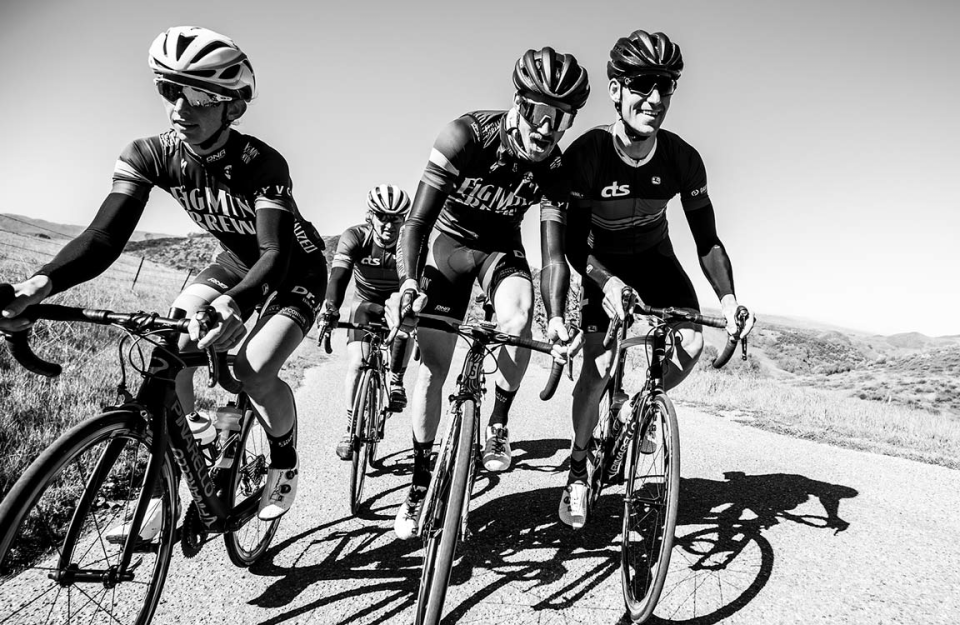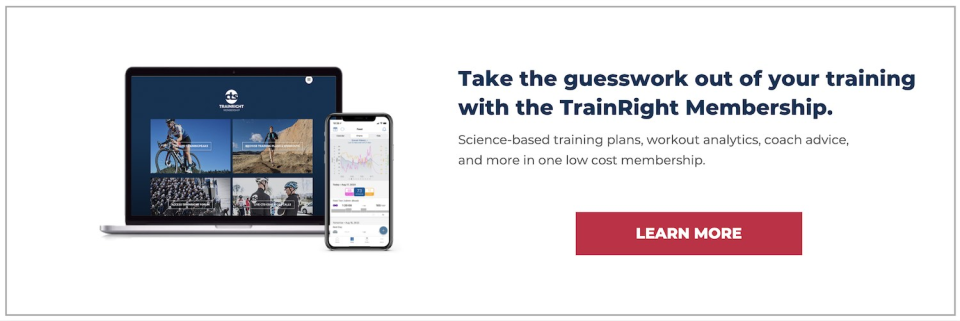9 Essential Cycling Skills All Riders Need to Master
Group rides and cycling events are cranking up again, which means it’s time to dust off those rusty group riding skills and get comfortable again with cycling in a pace line or a pack. This is a great time to talk about how you can improve your skills

Even if you have been riding for 20-plus years, I guarantee you’re an expert in some skills and still have room for improvement in others.
Why Bike Handling Matters
Obviously, good bike handling skills are most important for keeping the rubber side down. But staying upright is only one benefit. Great handling skills are essential for maintaining your position in a pack, and for moving up toward the front. Your ability to corner smoothly saves a little bit of energy on each turn, which adds up to a ton of energy by the end of a road race, gran fondo, or criterium.
Here’s a list of skills you need and how to get them. Each of the sections below can be an entire article itself. For the purpose of this article, I’ll keep it brief on each skill and I’ll include links to more detailed articles on this website focusing on specific skills when possible.
FREE 14 DAY TRIAL! USE CODE: TRM14GFG
Use the above promotion code when signing up for TrainRight Membership for a 14 day no obligation trial. TrainRight Membership comes with a 30-day money-back guarantee!
Cornering
Every time you lose ground in a corner you have to expend energy to make it back up. This is one of the top reasons riders get split off the back of a pack. Over time even a strong rider gets worn out by all the short accelerations to get back on the wheel. To improve your cornering, read this in-depth article and remember the following:
- Look through the corner to where you want to go. Your bike goes where your eyes go, so don’t look down at the wheel in front of you or at the pothole you want to miss.
- Focus your weight or pressure on your outside foot (which should be pointed down) and inside arm. The pressure on the outside foot is your traction, and the pressure on the inside arm is the trajectory of the turn. If you need to reduce the radius of a turn (turn sharper), apply more pressure to the inside arm to tip the bike to the inside.
- In a pack, it’s better to let a small gap open up as you enter a corner than to let that gap open on the exit. In other words, if you float into the corner and maintain more momentum than the riders ahead of you, you’ll close the distance as you go through the turn and come out on the wheel and hopefully without as much need to for a high-power acceleration.
- If turns are wet, gravelly, or you’re on an unstable surface, keep the bike more upright. The more you lean, the further your center of gravity moves away from the contact patches of the tires. When traction is lower, you want to keep your center of gravity closer to midline.
Descending
Having good cornering skills covers most of what you need for good descending skills; the speed is just higher. Here’s a detailed article on descending. Cornering through switchbacks is one of the more descent-specific cornering skills. The important thing to remember is to start wide and do the majority of your braking before initiating the turn toward the apex of the corner. The other tip that helps cyclists gain confidence is to keep your gaze far down the road. At 40mph you cover the distance of a football field (100 yards) every 5.1 seconds. With corners, rocks, potholes, etc. coming at you that quickly, you have to pick your lines early.
Moving up in a group
When it’s time to move up in the group, it is hard to fit between two riders riding shoulder to shoulder. Similarly, it costs a ton of energy to move to the outside of the group and accelerate in the wind. Moving diagonally is the most efficient way to go forward in the pack. To move diagonally between riders, you have to get your handlebars in front of the rider’s next to you. With your bars in front of theirs, you can dictate where the two of you go.
If the space is tight, protect your handlebars with a slightly flared elbow or make a little room with your shoulder. This is NOT the same thing as throwing an elbow or shoulder checking the rider next to you. Don’t to that. Similarly, you should never have to take your hands off the handlebars to move through the peloton. Using your hands to move a person over is dangerous and reveals deficiencies in your pack-riding skills. The only time you should put a hand on a rider’s shoulder or hip is to prevent a crash.
Riding a pace line
A good pace line epitomizes teamwork and the notion of a group being better than the sum of its parts. Here’s an entire article dedicated to pace line skills. The important things to keep in mind are:
- When it’s your turn to pull, maintain the speed of the group. If you surge or slow down the effect intensifies as it travels back through the group.
- You don’t have to pull for the same time as the rider before you. It’s better to take a shorter pull at the group’s speed than to slow down to take a longer pull. Similarly, if you’re strong, take a longer pull, not a faster pull.
- Pull off into the wind. If the wind is coming from the left, the pace line rotates to the left (counterclockwise). If the wind is coming from the right, pull off to the right. In a double pace line (2×2), each rider pulls off to his/her respective side and the group rides up between them.
- Save something to get back on. You’re going to have to accelerate to move from the recovery line to the pulling line, so don’t pull so hard you have nothing left to get back on.
Getting out of the saddle
To avoid crossing wheels with the rider behind you, it’s important to avoid throwing your bike backwards as you get out of the saddle. Everyone behind you will be much happier if you shift up one or two gears (harder gear) as you stand up so that first pedal stroke is strong enough to maintain your momentum. Don’t forget to shift back into an easier gear when you sit back down.
Bumping
In pro bike races on narrow roads, there is a lot of bumping of shoulders and elbows as riders fight for position on narrow roads and heading into even narrower sections. Even if you’re not fighting for position in a race, it is important to be comfortable with contact when you’re riding in a group. Here are some things to remember:
- Relax! Keep your elbows and shoulders loose. Keep a firm grip on the handlebars, but not a white-knuckle death grip. By keeping your upper body loose you can absorb a bump from the rider next to you and maintain a straight line. If you’re tense, that same bump will move you off your line.
- To protect your space and your handlebars, think about moving your upper body toward the rider bumping you, but not necessarily leaning on them. If they’re weight is leaning on you then you have to lean back in order for both of you to stay upright. But if it’s just a bump, you want to stay balanced on your bike and just use your body to maintain some personal space.
A great way to practice is to ride side-by-side with one or two friends on a grassy field, purposely bumping into each other, rubbing shoulders and elbows.
Looking behind you
All too often, a rider trying to look back over his or her shoulder swerves to the same side they rotate their head. In other words, if you turn to look over your left shoulder you tend to steer to the left. As you twist your torso and shoulders to look back, you’re pulling your bars to the left as well. To counter this, focus on keeping forward pressure on the bars or even pushing the bars a bit to the right. Practice in a traffic free parking lot.
The other way to stay safe when looking back in a group or pace line is to place your left hand on the shoulder of the rider to your left as you turn to look over your left shoulder (or right hand on the rider to your right to look over right shoulder).
Eating and Drinking
Some riders get nervous about taking a hand off the handlebars long enough to grab their water bottle or some food from their jersey pocket. If you’re riding in a pack for any amount of time, being able to eat and drink is essential.
Remember that your water bottle has been in the same place since the first time you bought your bike. You shouldn’t have to look down to find it, nor to place it back in the bottle cage. If you struggle to open food wrappers while riding, pre-open the wrappers for bars and chews before putting them in your pocket. The best times to reach back to grab food are the top of a climb (so you can eat on the descent) or obviously in a non-technical section of road.
To open a gel with your teeth without getting sticky stuff all over you, pinch the package at the top and use your teeth to tear the top off above your fingers. Once you’ve squeezed sucked as much as you can out of the package, you can fold the top of the package down to minimize whatever is left from leaking out into your pocket. Some people stash the empty wrappers in a different pocket or tuck them under the leg band of their shorts so they keep their food pocket from getting sticky.
To find out more, please visit: https://trainright.com/cycling-skills-all-riders-need-to-master/

